Beyond the Horizon: Forecasting Major Shifts in 2024’s Video Ad Landscape
PUBLISH DATE: 06 December 2023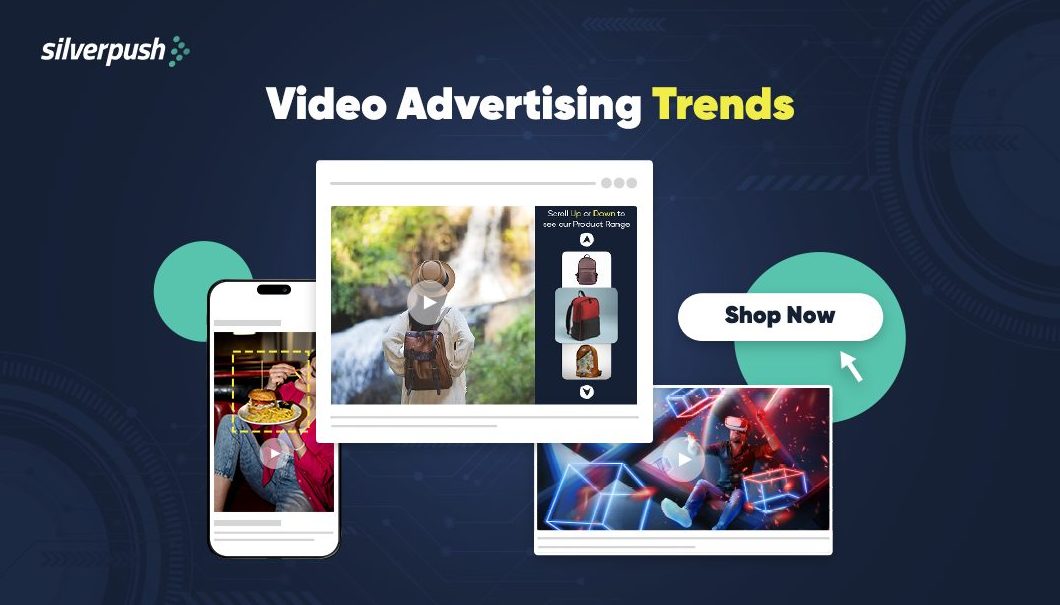
Video advertising has emerged as a pivotal element in the domain of content marketing strategy. Whether it’s a concise 30-second ad, an interactive campaign, or captivating live footage, integrated videos within your content stand out as a highly favored and efficacious means to captivate your audience.
Remarkably, video content is the preferred choice for 80% of individuals compared to traditional written text, and an impressive 87% of businesses are already using it as a potent marketing tool.
Research underscores that a compelling 88% of consumers have been swayed by marketing videos to make purchases of products and services. The undeniable power of video highlights the significance of grasping the latest trends in video marketing to maintain a competitive edge in 2024.
This blog aims to comprehend the trends that will shape the video advertising industry in 2024 and beyond. From the ascent of AI-powered advertising to the escalating importance of personalization, these video ads trends are bound to redefine how marketers engage with their audience and orchestrate successful video ad campaigns.
Top Video Advertising Trends for 2024

1. Growing Integration of AI in Video Advertising
The landscape of video advertising is swiftly evolving with the increasing integration of Artificial Intelligence (AI). Anticipate a surge in businesses adopting AI to produce and disseminate video content. With AI’s remarkable capacity to analyze extensive datasets rapidly, advertisers can:
- Enhance their understanding of the audience
- Fine-tune ad delivery
This approach ensures that the right message reaches the appropriate audience at the optimal moment. This, in turn, facilitates the creation of more compelling and pertinent video content that resonates with the target audience.
For instance, generating videos featuring available or customized avatars, where text input is the sole requirement. This proves advantageous for cost-effective video marketing when in need of a character but faced with constraints in time or resources for large-scale video production, employing text-to-speech, or automated voices.
Additionally, AI’s role in programmatic advertising is assuming a pivotal role. Fueled by AI algorithms, automated ad purchasing and placement will restructure the industry through real-time bidding and ad optimization. This results in more efficient ad campaigns with heightened conversion rates. In 2024, Artificial Intelligence is not merely a passing trend but a transformative force poised to reshape the video advertising industry.
2. Augmented Reality & Virtual Reality
The year 2024 will witness a paradigm shift in video ads through the integration of Augmented Reality (AR) and Virtual Reality (VR). AR advertising overlays digital elements in the real world, creating an interactive platform for crafting captivating campaigns.
These ads enable users to seamlessly merge the virtual and physical realms, fostering deeper engagement and memorable brand interactions. Conversely, VR advertising immerses users in entirely digital environments, providing a distinctive storytelling medium suitable for product demonstrations and brand narratives.
The ability to create immersive ad experiences holds the potential to captivate audiences, setting your brand apart from competitors in a landscape where traditional video advertising methods might no longer be as effective.
This innovative approach pledges to deliver campaigns that are not merely viewed but profoundly experienced by consumers. As the future of video advertising veers towards interactivity, the AR and VR advertising wave signals that your business is leading the way in innovation and adopting superior business practices.
3. Contextual Advertising for Enhanced Relevance
Contextual advertising remains a significant tool for marketers in 2024. Global spending on contextual advertising is projected to reach $227.38 billion in U.S. dollars in 2023, and this figure is anticipated to more than double by 2030, reaching an estimated $562.1 billion.
The United States stands as the world’s largest contextual advertising market, with a market value of approximately $65 billion in 2022. This type of advertising places ads based on the surrounding content, resulting in a smoother and less disruptive ad experience.
Amidst rising ad blocking and privacy concerns, contextual advertising offers a solution that respects user preferences while delivering relevant content. As user expectations for personalized advertising increase, marketers can anticipate more of this approach.
To thrive in contextual advertising, marketers must meticulously align their ads with the context to enhance the user experience. This trend strongly emphasizes quality content and strategic placement over sheer volume. This can be achieved by researching and understanding the target audience, as well as identifying the most relevant keywords and phrases to include in the ads.
4. Short-Form Video Content: A Dominating Force
In 2024, short-form video ads are projected to dominate video advertising, accounting for a significant portion of ad spend. Advertisers are likely to capitalize on the format’s effectiveness in conveying concise yet impactful messages. The brevity of these ads aligns seamlessly with the reduced attention spans of today’s audiences, making them a powerful tool for brand communication.
In 2023, programmatic short-form video ad spending is expected to reach a staggering $12 billion, a 50% increase from the previous year. This explosive growth isn’t just a fleeting trend; it’s a fundamental shift in how consumers engage with video.
This shift has profound implications for 2024’s video ad landscape. Expect to see an abundance of short-form video ad formats, optimized for mobile viewing and lightning-fast storytelling. Programmatic platforms will adapt, providing granular targeting and real-time analytics to help brands reach the right audience with the right message at the right micro-moment.
5. Shoppable Ads
Shoppable ads are an innovative format that allows viewers to purchase products directly from video ads. By incorporating eye-catching product imagery alongside video ads, brands can inspire viewers and direct them to specific product pages on their website, creating a seamless path to purchase.
According to Think with Google, brands that utilize product feeds in their video action campaigns achieve over 60% more conversions at a lower cost. Video action campaigns can help scale video ads automatically across various platforms, including the home feed, watch pages, connected TV, and search. They utilize machine learning to drive conversions and provide valuable attribution insights.
To implement shoppable ads, brands can attach a product feed from the Google Merchant Center. This allows viewers to browse products directly within the video ad and seamlessly navigate to the corresponding product pages on the brand’s website for purchase.
Wrap Up
In conclusion, the video advertising industry is up for a significant shift in 2024 and beyond. The integration of AI, AR, and VR will reshape how brands engage with their audience and create captivating ad experiences.
Contextual advertising remains a valuable tool, while short-form video content and shoppable ads will gain prominence. By utilizing these video industry trends, marketers can effectively capture attention, drive conversions, and establish a competitive edge in the ever-evolving world of video advertising.
A New Era of Online Video Ads: Dynamic Video Optimization
PUBLISH DATE: 19 September 2023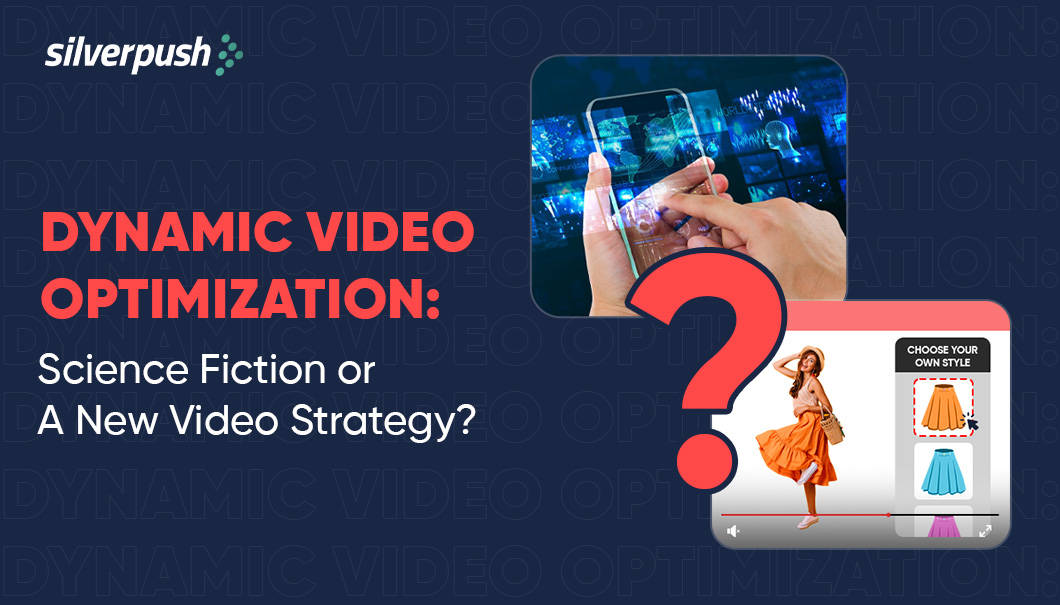
Dynamic Video Optimization may seem like a concept straight out of a sci-fi movie, but it’s very much a futuristic reality. This cutting-edge technology empowers brands to seamlessly integrate text, audio, or images into their videos, creating an endless array of variations from a single video source. This innovative approach enables brands to tailor their videos to reach specific audiences, paving the way for precision-focused video marketing strategies in their media plans.
Why is this particularly crucial, especially in the current landscape? The reason lies in the explosive surge of video viewership, especially on mobile devices, on a global scale. As dynamic video optimization continues to expand rapidly, brands are challenged to discover fresh and inventive methods to distinguish themselves from their intended viewers.
Why Interactive Video Ads Are an Asset?
The average daily time people spend consuming online videos has surged dramatically, increasing by more than fourfold since the global pandemic. This upward trajectory is further propelled by the widespread adoption of mobile devices.
Interactive video has quickly become a widely used marketing tool as brands are turning every stone for consumers’ attention. According to a study by Spiel Creative, almost 90% of marketers after incorporating interactive video noted a growth in their online sales, and over 85% said that they would create more interactive videos in the future.
Enhance Your Brand’s Presence with Compelling Video Content
Brands increasingly embrace video content enriched with customized messaging that is finely tuned for specific audiences. When compared to traditional display advertising, video marketing emerges as a significantly more dynamic and interactive medium, consistently demonstrating its ability to foster heightened engagement and subtly captivate customers.
Challenge with Videos on The Open Internet
So, why are brands hesitant to leverage this technology more for their ad campaigns? Why aren’t videos dynamic? The only issue that limits the potential of a video marketing campaign is the amount of customization that can be done. Video ads today are generic and communicate the same story to all users – unlike display ads which are increasingly becoming more dynamic with widely available solutions.
Adding to the above, video production also presents its challenges which include: lengthy planning periods, high production costs, and long lead-up times. Add customization to it, and it becomes even more complex.
A Next-Gen AI Solution: Crafters
Crafters is an innovative AI tool to create dynamic video advertising that allows brands to dynamically embed interactive elements within their videos to generate unlimited video variations – cutting down on efforts, costs, time, and planning. Text is integrated using the brand’s native font type.
A brand develops a single video to showcase its latest offer. With Crafters, a different message can be shown to the user depending on multiple factors. A popular streaming platform used Crafters to increase brand awareness for their new show, in which viewers could pick a character based on the video for which that specific character is played.
Here’s a photo from the original video:
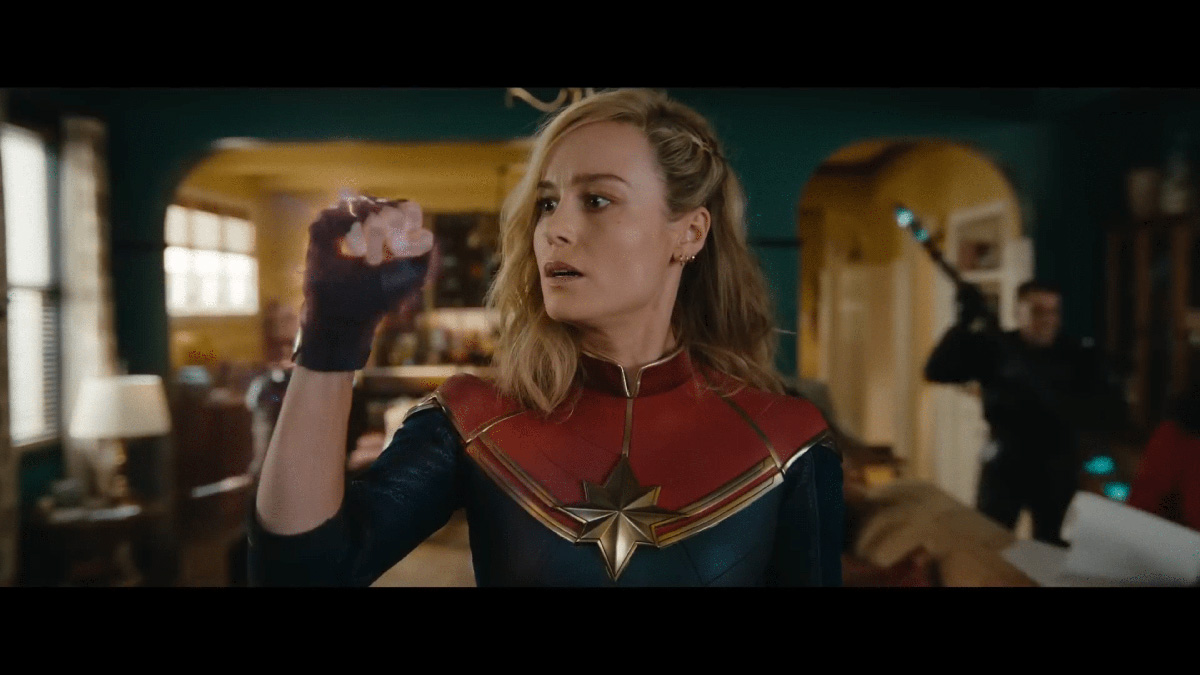
Here is an image of videos generated by Crafters that speak to a viewer’s preferences:
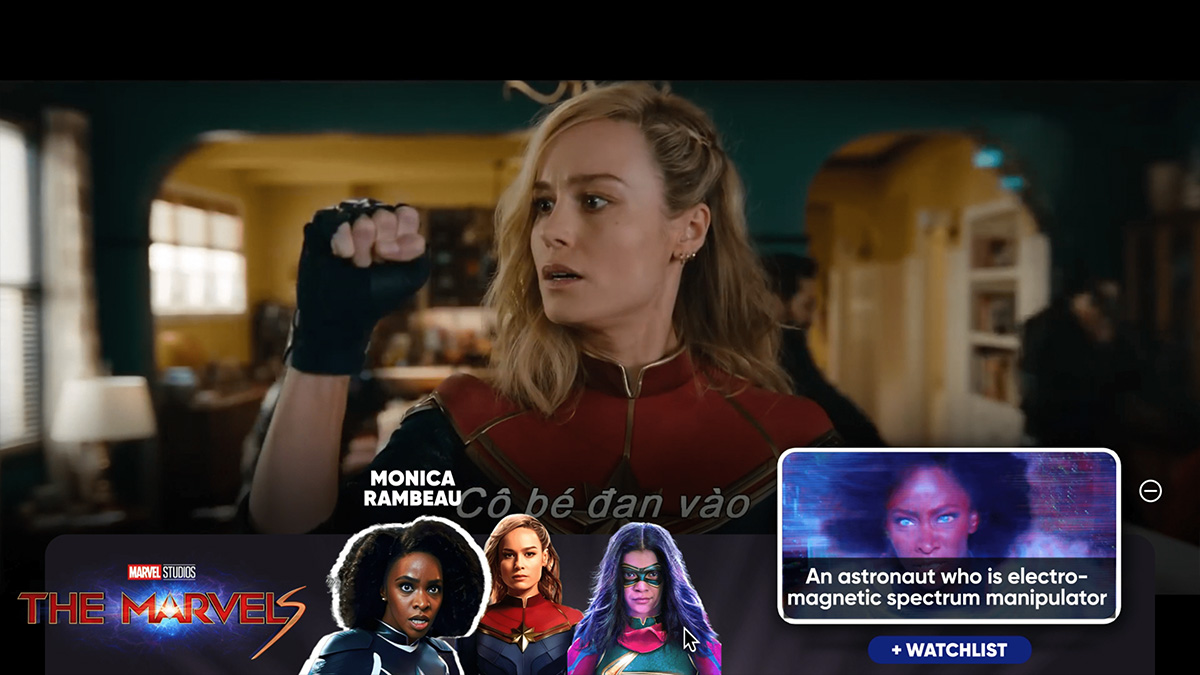
Our innovative AI technology allowed the brand to customize a variety of messages around the themes of characters. The campaign allowed the brand to transform its simple video ad for a new TV series into a powerful and targeted message delivered to the intended audience.
With more and more users having access to the Internet and turning to Openweb for their search, Crafters is a clever way to add a personal touch and develop multiples of one video. The future is definitely here.
Unlocking the Full Potential of Video Advertising with Mirrors’ Dynamic Video Optimization
PUBLISH DATE: 28 June 2023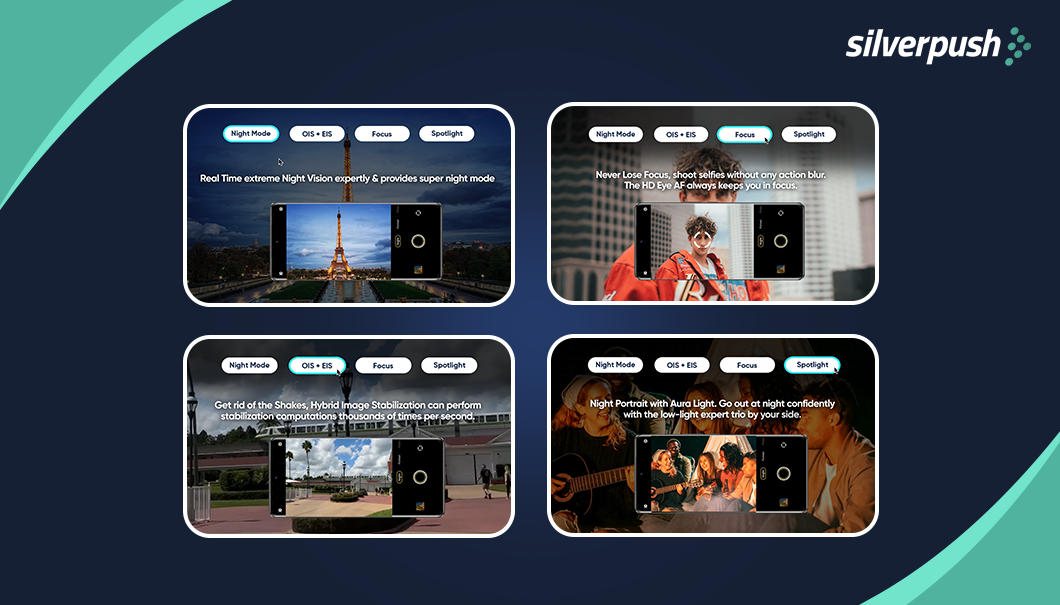
Crafters is here to transform traditional ads into highly advanced interactive ads with its cutting-edge dynamic video optimization.
With global ad spending expected to exceed $295 billion by 2026, video advertising has become an immensely popular method to connect with audiences online.
With over 2 billion active users worldwide, YouTube stands as the leading video advertising platform, hands down.
Unfortunately, engaging with users through video advertising on the open web is not as straightforward and convenient as it is with YouTube videos.
Read on to discover why video advertising on the open web is lagging behind and explore various methods that can help users unlock the full potential of video advertising across the web.
Factors Hindering Video Ad Promotion on the Open Web
Below are the reasons for hesitation in promoting video ads on the open web versus YouTube and other social media platforms:
1. Low Viewability
Video ads on the open web are often skipped or muted, resulting in low viewability rates. According to a study by IAB, the average viewability rate for video ads on the open web is only 58%. In contrast, the average viewability rate for video ads on YouTube is 95%.
2. Poor Targeting
Video ads on the open web lack precise targeting options because they rely on programmatic advertising based on website content and user browsing history which reduces advertiser control.
3. Lack of Engagement
Video ads on social media platforms are more engaging than those on the open web because they play uninterrupted.
Here are the top three reasons that have kept video advertising on the open web in the backseat. However, by modifying our advertising methods and incorporating advanced techniques such as dynamic video optimization, advertisers can witness significant improvements in their campaigns.
But, first, let’s understand DVO.
What is Dynamic Video Optimization?
Dynamic Video Optimization (DVO) is an innovative programmatic advertising approach that uses data-driven insights to create personalized video ads.
By analyzing user data, including interests, demographics, and browsing history, DVO enables advertisers to customize video content for each viewer.
Real-time analytics and contextual information are leveraged to tailor the ads based on the current context.
This personalized approach enhances the ad experience, increasing the likelihood of capturing viewers’ attention and driving conversions.
Consequently, DVO delivers relevant and engaging video content that resonates with individual viewers, maximizing the effectiveness of video advertising campaigns.
Why Should Advertisers Use Dynamic Video Optimization?

1. Advanced Targeting Capabilities
DVO offers advanced targeting capabilities, allowing advertisers to reach their desired audience with precision. Delivering video ads to the most relevant viewers increases the chances of engagement and conversions.
2. Enhanced User Experience
DVO enables advertisers to create immersive and interactive video ad experiences. By incorporating features such as shoppable touchpoints, users can seamlessly explore and purchase products or services directly from the video. This improves the user experience by eliminating the need for multiple clicks and streamlining the path to purchase.
3. Data-Driven Insights
DVO provides valuable data and insights that can inform advertisers’ future strategies. By tracking user interactions, engagement metrics, and conversion data, advertisers can gain a deeper understanding of their audience’s preferences and behaviors. These insights can then be used to optimize future video ad campaigns for better results.
4. Measurable Results
With DVO, advertisers have access to detailed analytics and performance metrics. This allows them to track the effectiveness of their video ads in real time, measure key performance indicators (KPIs), and make data-driven decisions to improve campaign performance. Advertisers can easily monitor CTRs, view rates, conversions, and other relevant metrics to evaluate the success of their advertising efforts.
5. Dynamic Storytelling
DVO enables advertisers to tell compelling stories through video ads. By leveraging dynamic content insertion and personalization techniques, advertisers can tailor their messages based on individual viewer characteristics, interests, or behaviors. This approach creates a more engaging and memorable experience for viewers, leading to higher brand recall and affinity.
6. Omnichannel Reach
DVO allows advertisers to reach their target audience across multiple platforms and devices. Whether it’s mobile, desktop, social media, or connected TVs, advertisers can deliver their video ads seamlessly across various channels, ensuring maximum reach and visibility.
Enhance Your Video Creatives with Silverpush’s Crafters
Crafters is Silverpush’s highly advanced dynamic video optimization technology. It is a solution for creating and delivering personalized video ads to users based on a variety of data sources.

We all know Videos are the most engaging Ad Format. But by infusing AI and unique Interactivity features, Crafters can help brands in leveraging Video Ads on the Open Web, like never before!
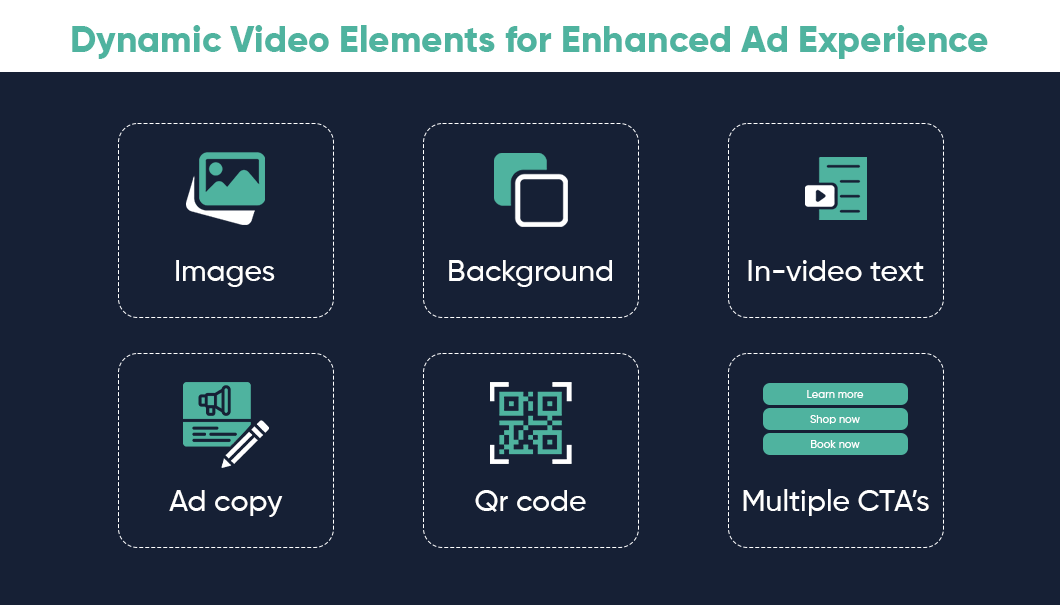
Crafters will help you improve the performance of video advertising campaigns by adding a layer of contextual creativity that will drive better business outcomes.
Here are some additional tips for using DVO effectively:
1. Use the Right Data
The data you use to create your DVO campaigns is critical to their success. Make sure you’re using high-quality data that is relevant to your target audience.
2. Test Different Variations
Once you’ve created your DVO campaigns, test different variations to see what works best for your audience. This will help you optimize your campaigns for maximum results.
3. Track your Results
It’s important to track the results of your DVO campaigns so you can see what’s working and what’s not. This will help you make adjustments to your campaigns to improve your results.
Importance of Crafters: Elevate your Performance and Engagement on Video Ads
1. Advertisers
Our next-gen video optimization technology solves the problem of ads being ignored by audiences. By incorporating an interactive feature into traditional video ads, it has the potential to generate users’ curiosity and encourage them to engage with the ad. This leads to improved performance metrics such as click-through rates, lead generation, and video view-through rates.
2. Users
Users will not only view the video ad but will have various formats to interact with the ad as per their interest, ad type, and various options to redirect to the desired page.
Conclusion
With the advertising world growing at a fast rate, it’s important to keep pace. Traditional video ads fail to engage users or boost user engagement. That’s why Silverpush has developed an advanced solution delivering a staggering 2X increase in Click-Through Rates (CTRs) and an impressive uplift of nearly 60% in Video Completion Rates (VTRs) solving the problems of video advertising on the open web. Take a step towards boosting your ad performance and capturing audience attention by filling out the form on the right. Our team of experts will be in touch with you shortly to provide more insights into our groundbreaking technology.
From Disruptive to Delightful: The Power of Contextual Video Advertising
PUBLISH DATE: 27 March 2023
Video advertising has become a highly effective tool for brands and advertisers to communicate their messages to online audiences. In the year 2021, $ 55.34 billion was spent on digital video advertising in the United States alone.
Since its inception, video advertising has faced criticism for being inherently interruptive in nature. Online users tend to skip or ignore ads that appear to them as annoying or interruptive.
This non-engagement of users with the ads is a serious headache for advertisers, and they are struggling to find a way out.
Role of Video Ad Formats in Grabbing Viewer’s Attention
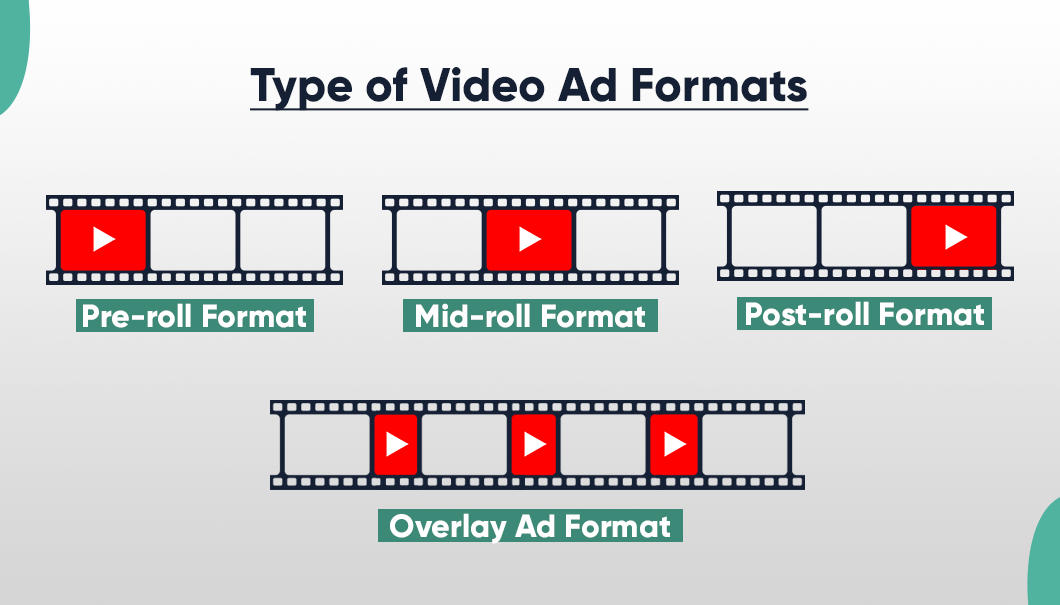
Research shows that brands are now increasingly concerned about the interruptive user experience when running their video advertising campaigns.
Brands are trying to make in-video ads more engaging and less annoying for users. In order to draw effective user engagement, ads should capture the user’s attention in the first few seconds.
Video ad formats also play an important role in driving better user experience and engagement. By deploying better formats, marketers can make their advertising strategy more effective.
According to eMarketer, 60% of video ads fall in the in-stream category. Most marketers are currently deploying interruptive in-stream ad formats that can be easily skipped or ignored.
Pre-roll and post-roll are used more often over other formats such as overlay video and mid-roll.
Overlay ad format, which places an ad over the video content, offers an advantage over other in-stream formats of not overtly interrupting the underlying video content being watched by the user. Thus, overlay ads are less annoying and tend to provide a better user experience.
Mid-roll format is least favored by marketers, especially for short video content, because it is highly interruptive. Therefore, marketers are currently mainly utilizing pre- and post-roll in-stream ad formats for achieving their advertising goals and the whole video content itself needs to be accounted for. Here, the overlay format comes to the rescue. It allows marketers to capitalize on unutilized video content without being interruptive to users.
Contextual Advertising: Not Letting Irrelevant ads Annoy Users
Brands have identified certain obstacles in the path of video ad innovation. These include inadequate budget, lack of in-house expertise, misaligned in-house teams, lack of agency relationships, and lack of strong external technology partnerships.
To achieve their video advertising goals, brands and marketers should focus on innovative, non-interrupting ad formats.
But only using the right in-video ad format will not work, marketers should make use of robust, efficient, and effective advertising technology such as AI-powered advertising, and give utter importance to context.
They should serve contextually relevant in-video ads that are well-aligned with the content the user is consuming.
According to industry experts, video advertising strategy in the future will be impacted by factors such as demand for non-interruptive ads, growth of over-the-top and connected TV ad formats, growth of social networking and video-sharing advertising formats, and demand for contextual advertising.
Users’ demand for non-interruptive ads on connected TV has grown over the years in sync with the growth in its viewership.
Currently, in-stream video advertising on this platform is largely interruptive in nature. Contextual video advertising offers an effective solution to marketers to mitigate this interruption on connected TV and enhance user experience.
By using the right mix of in-video ad formats and contextually aligned ads, advertisers can turn upside down the user experience from being interruptive to engaging. To display contextually aligned video ads, a highly effective solution is afforded by AI-powered in-video key context technology.
Mirrors’ Computer Vision Technology
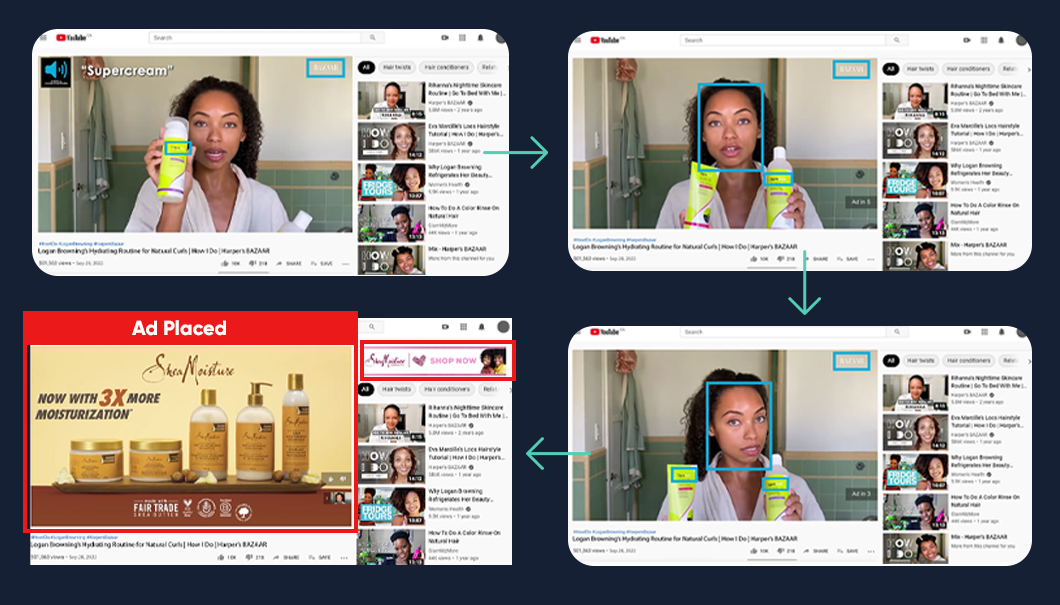
AI-advertising solutions that are dependent on machine learning, NLP, and semantic analysis, miss the mark when it comes to understanding the sub-text, nuanced contexts, and complex relationships words have in written or spoken language.
Mirrors’ computer vision contextual advertising technology provides a very high degree of contextual relevance. This technology works by accurately identifying key contexts in videos such as faces, emotions, brands
, objects, scenes, and activities in order to display in-video ads that are in line with what the user is actively engaging with.
Last Words
Highly contextually relevant ads appear non-interruptive and appealing to users and boost the chances of users watching or clicking them. With AI-powered contextual video advertising, marketers can seamlessly integrate ads with the video content the user is watching, thereby providing a non-interruptive, highly engaging user experience. To know more about Mirrors and how it can unlock your brand’s revenue potential, fill up the form on your right, and a member of our team will soon contact you.
Video Contextual Advertising: Everything You Need to Know
PUBLISH DATE: 17 March 2023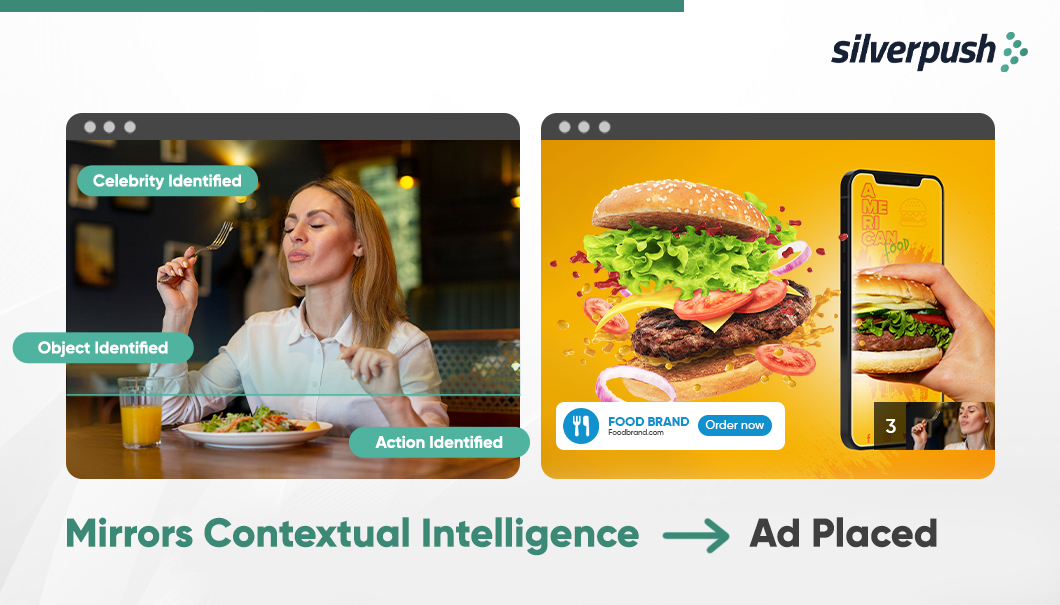
Explore the world of in-video contextual advertising and master in creating engaging and personalized contextual ads for exceptional customer engagement.
As per current data, there are 3.1 billion digital video viewers worldwide, and online video is projected to account for 82.5% of all web traffic by 2023, making it the most preferred type of content on the internet.
With the increasing popularity of video content, more and more marketers are leveraging this medium to showcase their ads and expand their reach.
However, it’s crucial to note even the best advertisements, which have a feel-good factor about them, don’t perform well if they are fitted into irrelevant contexts.
Even a report from the University of Oxford supports this point. It observed that cheerful ads when inserted in between a gloomy part of the video don’t create much impact.
That’s why it’s important for advertisers to connect with viewers and convey their message in a relevant context. By carefully choosing where to place their ads within videos, advertisers can increase their revenue and create a more impactful experience for their target audience.
In this blog, we’ll take a closer look at what in-video contextual advertising means, its modus operandi, the benefits it offers for both advertisers, and some best practices for using this advertising method effectively.
What is In-Video Contextual Advertising?
In video contextual advertising, ads related to the content being seen or read are placed to ensure better connections with the audience.
Video ads can have more impact through in-video contextual advertising where in-video ads are placed relevant to the content being played out in the video.
This ensures that the viewer finds the advertisement to be closely related to what is being seen, and therefore, would be more interested in knowing the product.
They are typically triggered by specific keywords or phrases that are relevant to the video’s content, which helps ensure that the ads are relevant and engaging for the viewer.
For example, you’re watching a cooking video on YouTube. As you watch the video, you may notice that there are ads that appear within the content itself, such as a sponsored product placement for a particular brand of cookware or ingredients.
These ads are contextually relevant to the video content and provide value to the viewer by offering solutions or recommendations related to the topic at hand.
How Does In-Video Contextual Advertising Work?
Contextual advertising within videos relies on contextual data to deliver relevant and targeted video ads to viewers, based on the content they are watching. To achieve this, advertisers often partner with specialized contextual advertising companies like Silverpush, which have expertise in placing in-video contextual ads.
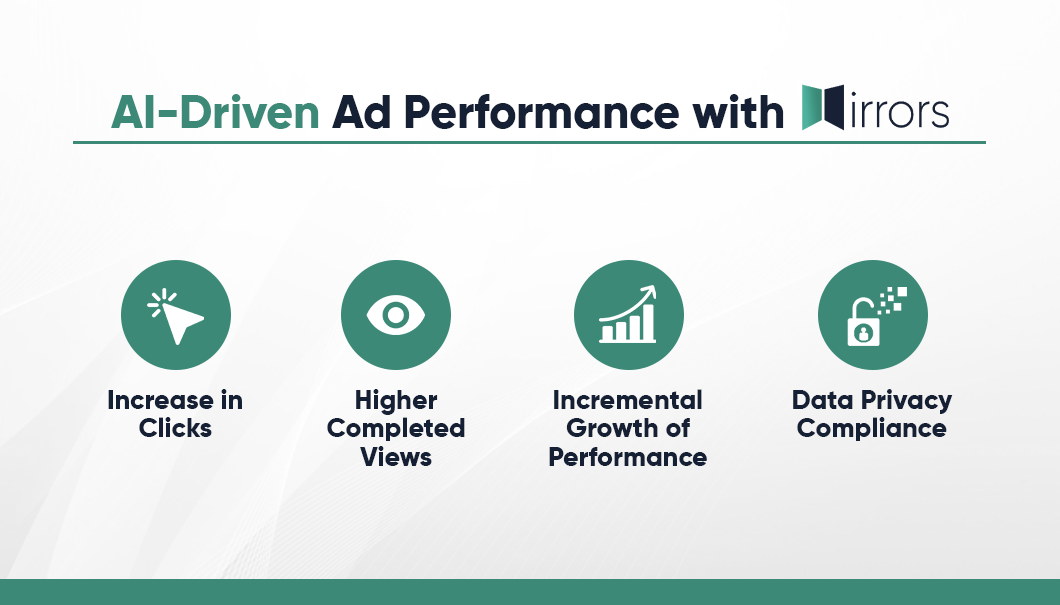
Silverpush’s flagship product, Mirrors is the world’s first in-video context identification technology. This hyper-contextual technology allows for more precise and effective ad placement within videos, resulting in a more engaging and personalized viewing experience for the audience.
Powered by AI, Mirrors performs video analysis to extract the right context. It identifies key contexts like celebrities, brands, objects, actions, and other context signals for a nuanced level of targeting at the video level and places ads accordingly.
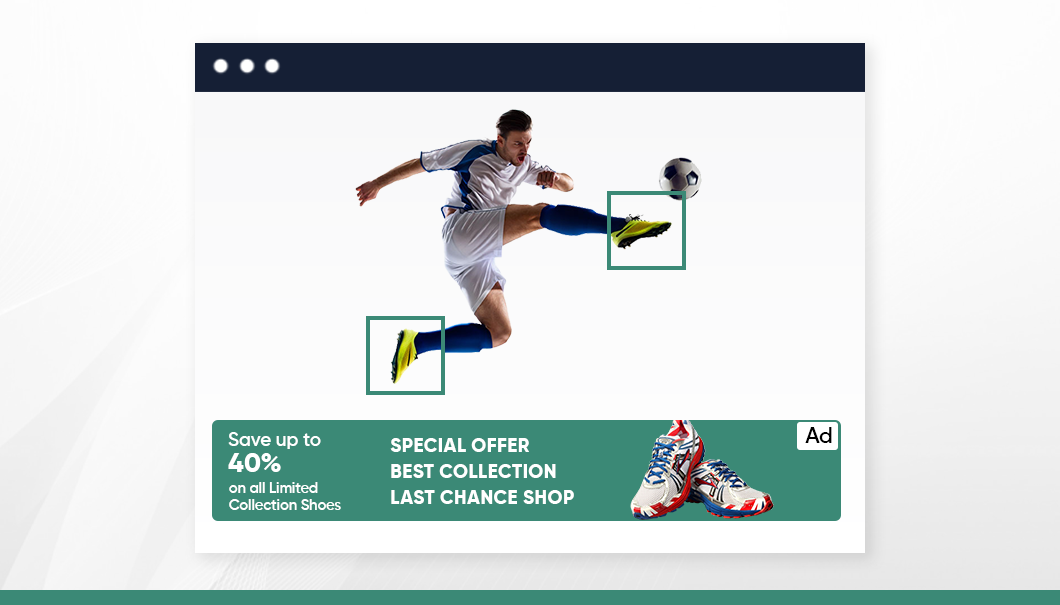
In the past 5 years, Mirrors has processed 1.5B+ videos and built its own historic data intelligence to accurately determine which context performs best in each country. To know more about Mirrors contextual advertising platform and how it can help you in reaching your targeted audience, fill out the form on your right and an expert from our team will soon contact you.
Benefits of In-Video Contextual Advertising
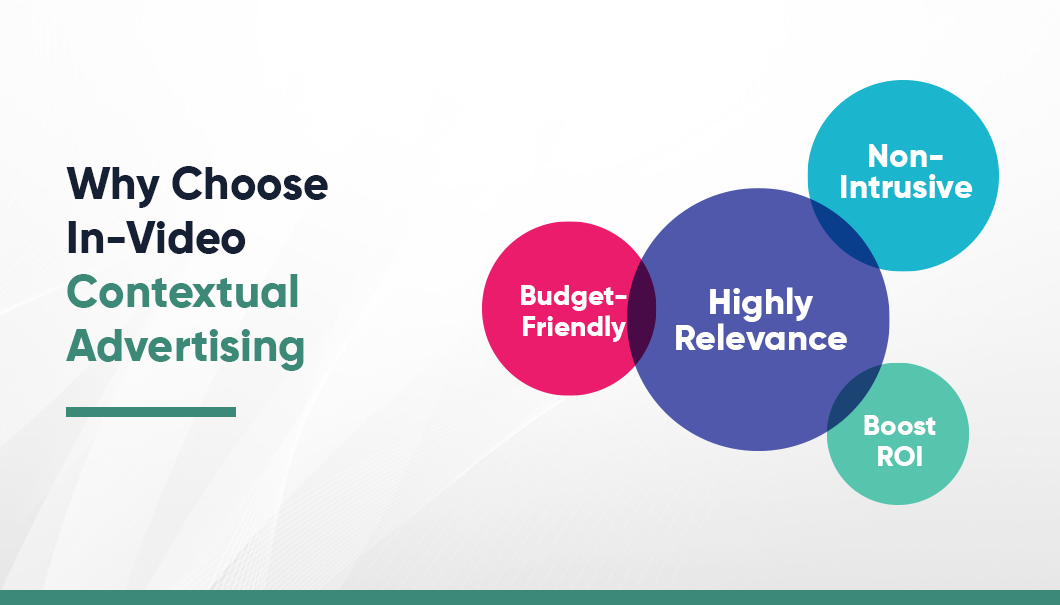
There are many benefits to using contextual video advertising for both advertisers and brands. Some of the key benefits include:
1. Relevance: In-video contextual advertising ensures that ads are relevant to the content that viewers are currently watching. This helps increase engagement and can lead to higher conversion rates for advertisers.
2. Non-Intrusive: In-video contextual ads are seamlessly integrated into the content itself, which makes them less intrusive and more enjoyable for viewers.
3. Cost-Effective: In-video contextual advertising can be more cost-effective than traditional video advertising because it allows advertisers to target specific audiences more effectively.
4. Increased Revenue: In-video contextual advertising can increase the revenue of brands by experiencing an uptick in their ROI.
Best Practices for In-Video Contextual Ads
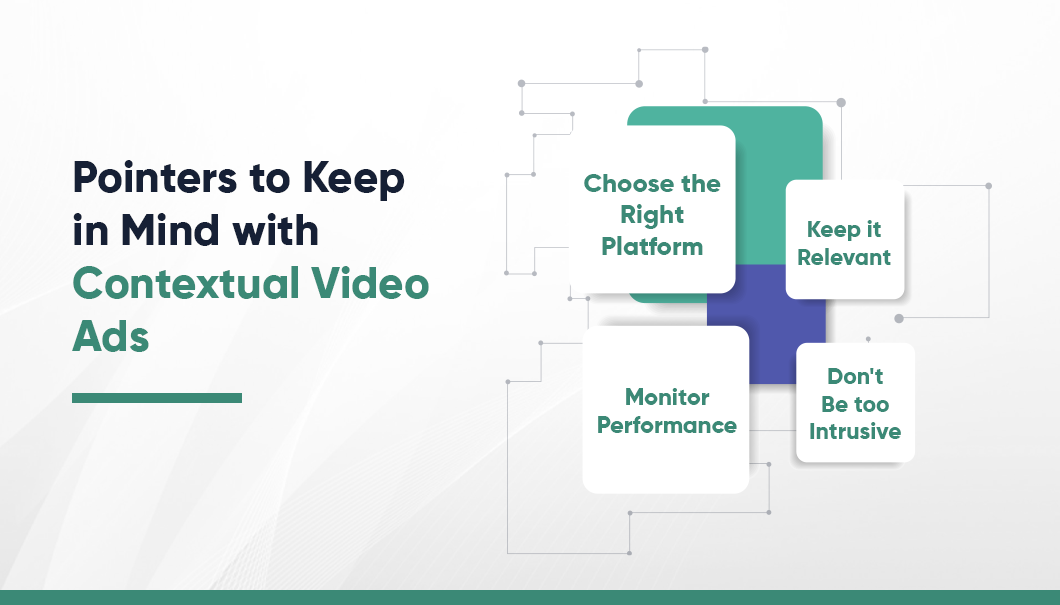
If you’re considering using in-video contextual advertising as part of your marketing strategy, there are a few best practices to keep in mind:
1. Choose the Right Platform: There are many different platforms and networks that offer in-video contextual advertising, so it’s important to choose one that is a good fit for your audience and budget.
2. Keep it Relevant: Make sure that your ads are contextually relevant to the content that viewers are currently watching. This will help increase engagement and conversions.
3. Don’t Be too Intrusive: Contextual video ads should be seamlessly integrated into the content itself, without being too intrusive or disruptive.
4. Monitor Performance: Keep a close eye on how your ads are performing and make adjustments as needed to optimize for better results.
Unlock your Revenue Potential with Mirrors In-Video Contextual Advertising
Mirrors’ cutting-edge in-video context identification technology can help your brand place the right content at the right time in a video, increasing the likelihood of your ads resonating with viewers.
With Mirrors, you’ll be able to create a more engaging and personalized viewing experience, resulting in more impressions and clicks on your ads. Don’t miss out on this opportunity to elevate your brand’s advertising game. Contact us today!
Magna Forecasts Stronger Outlook for Ad Industry in 2022 with FIFA World Cup, US Election
PUBLISH DATE: 20 July 2022
Magna, the leading global media investment and intelligence company has referred to some ‘cynical factors’ that are going to stimulate the ad industry. The US election is definitely one of the periodic events which are expected to generate $8 billion of political revenue that will go into local television. About 90% of [US political ads in 2022] will be incremental for the ad industry.
Aside from the US political event, international sports festivities are also key events that are going to contribute to an increase in global ad revenue. Beijing Winter Olympics, which took place last winter, and the Qatar World Cup 2022, are such great examples. The World Cup 2022 in particular will have a strong impact on the global advertising industry. One of the key reasons is that it is going to take place in November, that is right after holidays, that is when marketing campaigns abound and ad rates soar to new heights.
You may also like: Ad Tech Sees an Uprise in India as Investment Rose 208% to $8 Million in CY21
With the reports shared by Magna, it has been observed that these organic and cyclical factors have already translated to a strong ad market in the first quarter of 2022, in which the US, for example, saw a 14% increase in ad revenue.
Digital advertising sales will grow by 13% to reach $534 billion, 65% of the total ad sales, in the year 2022. Amongst the various digital formats, digital video will witness the most growth of 16%, while search will occupy the biggest market share of $265 billion in the upcoming quarter. Social advertising will see a growth of mere 11%, which is unexpectedly lower than both video and search.
Advertising revenue for traditional media like TV, radio, out-of-home, print, and cinema will see a growth of 4% to $282 billion. As the global pandemic situation will decrease, out-of-home ad revenue will see a 10% increase. It will be interesting to note that much of such growth of traditional media will come from ads generated by cyclical events which would otherwise only grow by 2%.
Silverpush Wins Big at MMA Smarties MENA 2021 Awards
PUBLISH DATE: 30 June 2022Silverpush, a Singapore-based marketing solutions provider which offers AI-based solutions won big at MMA Smarties MENA 2021 awards. The AI-based ad tech firm won 3 Gold awards for the RAKBank – EMO-BOT campaign and other awards in different categories and campaigns. It was a proud moment for the Silverpush team across the globe as they once again proved they are the unbeatable when it comes to contextually-relevant video advertising.
Silverpush is an advertisement technology company that leverages technologies like deep learning and computer vision to help advertisers reach their targeted audience at the moment it matters most. Its two main products- Mirrors and Parallels have made their mark in the advertising industry by helping brands reach their audience at the correct time and place contextually.
RAKBank – EMO-BOT- Emotional Robot, and Kitco IPL Sports Sync AI Activation were the two campaigns for which Silverpush bagged six awards in total. The six category awards in different campaigns for which Silverpush got the awards are these –
Campaign Name – RAKBank – EMO-BOT- Emotional Robot:
- Gold – Machine Learning and AI
- Gold – Lead Generation / Direct Response / Conversions
- Gold – Data/Insights
- Bronze -Contextual / Native Advertising
Campaign Name – Kitco IPL Sports Sync AI Activation:
1) Silver – Machine Learning and AI
2) Silver – Innovation
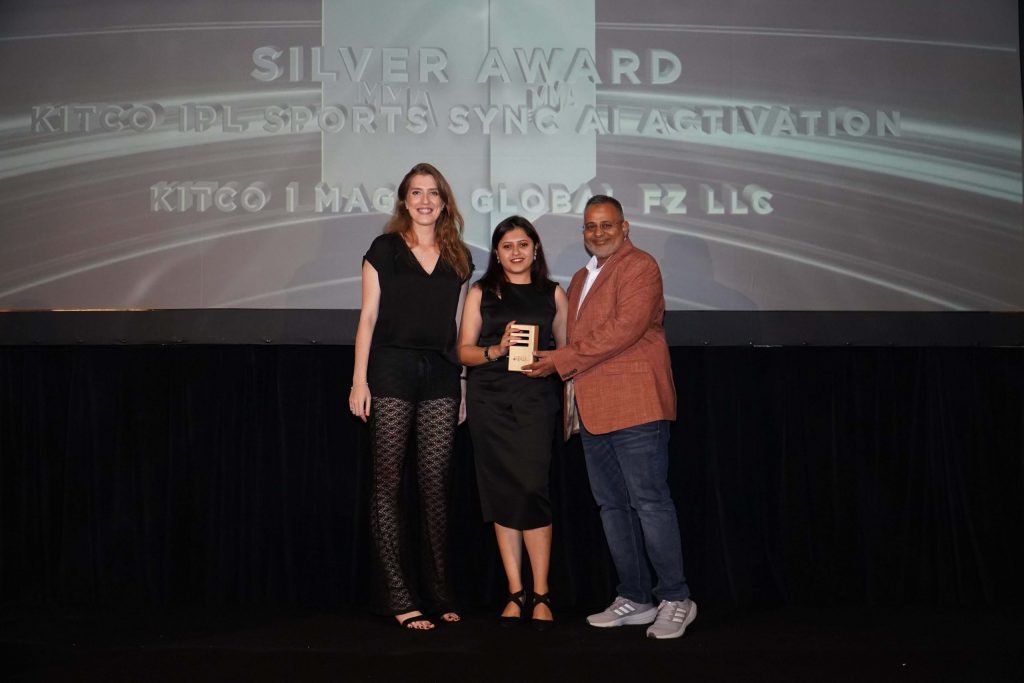
Silverpush was honored with Gold for its EMO-BOT campaign with RAKBANK. The bank had partnered with MetLife to sell life insurance to people in the UAE. Unlike chips or a car, life insurances are a tricky product to sell, and research suggested that life insurances are purely emotions based. Thus, to sell life insurance to people who aren’t even looking for it or strike the right emotional chord with people, RAKBANK joined hands with Silverpush.
Its AI-powered EMO-BOT has the power to detect unquantifiable human emotions. The bot scanned through the YouTube inventory and filtered out videos that were relevant to the 75+ life stages detected. By deploying a range of contextually relevant ads for each stage the gap between video content, the ads message, and the viewers’ emotions were bridged. The campaign was successful in achieving 2 million+ impressions, reaching 4,51,000 audiences and the engagement rate was 1.5X higher than the average benchmark and the company was able to sell insurances worth $350k.
The next in line is the Kitco IPL Sports Sync AI Activation campaign that gave Silverpush two (02) silver and one (01) bronze award in the MMA event. Cricket is not just a game but an emotion for Asians and the company aimed to become their number one snack during game time. For this, the savory snack company partnered with Silverpush to leverage the authentic fan emotions and passions to reach the Asian fans in the UAE during IPL. Silverpush’s AI-based sports sync technology helped KITCO chips bridge the emotional gap between cricket fans and engagement and capitalize on the munching habit of fans during in-game moments. The campaign was successful in gathering 5 million+ impressions, 1.92 million views, and 1.81+ unique users.
Silverpush is re-engineering the future of the advertising industry with its artificial intelligence-powered advertising technology solutions. Its robust ad tech solutions help brands in connecting with consumers at the right time and place and thus boost brand awareness, conversions, and sales.
Top 5 Video Advertising Trends to Watch for in 2022
PUBLISH DATE: 17 February 2022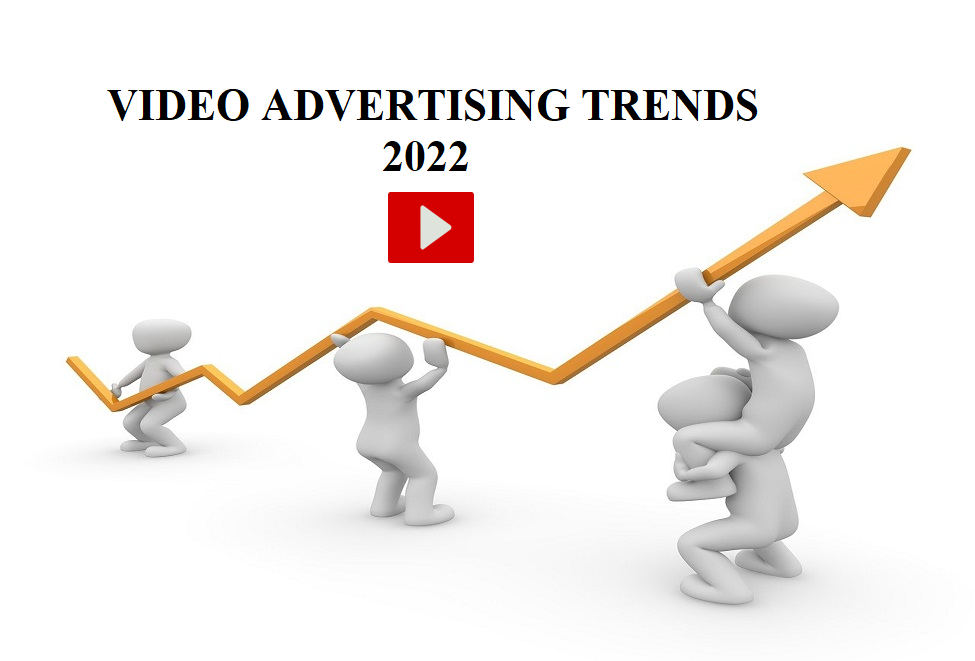
Last two years saw a surge in the investment in video advertising and other forms of digital marketing by businesses of all sizes. This surge was mainly fueled by the pandemic.
Video was used as a marketing tool by more than 85% of the businesses during the last year, i.e., 2021. 93% of marketing professionals have acknowledged that video helped them in increasing brand awareness in 2021. Below are discussed some of the top video advertising trends to watch for in the year 2022.
YouTube will Remain the Top Platform for Video Marketers
YouTube advertising has helped build countless number of brands. A recent survey of video marketing professionals has revealed that their most widely used platform is YouTube. More than 80% of video marketers consider YouTube as an effective channel. In 2021, YouTube was used by eighty-six percent of the video marketers, and eighty-eight percent of them are planning to use it in the year 2022.
Transition from Behavioral to Contextual Advertising will Increase
Due to the recent data privacy regulations and rising consumers’ awareness regarding online privacy, marketers are finding it increasingly difficult to track people via third-party cookies. The use of third-party cookies has been already discontinued by browsers such as Firefox, and by late 2023, Chrome browser will also discontinue these cookies.
Contextual advertising offers the best way to advertise on the internet as it does not involve the use of 3rd party cookies, and is highly effective, cost-efficient and does not invade consumers’ privacy. A recent survey shows that forty-nine percent of marketers are looking to contextual ad targeting in order to replace third-party cookies. This trend will rise sharply in future.
Investment in Connected TV Advertising will Rise
People are increasingly watching connected TV over traditional TV. It has been forecasted that the number of connected TV households in the US will increase to 110 million in 2022.
The October 2021 eMarketer forecast predicted that connected TV ad spending in the United States will increase to $19.10 billion in 2022 from $14.44 billion in 2021, and by the year 2024, it will be $29.50 billion, i.e., more than double the amount spent in 2021.
eMarketer has forecasted that Connected TV net ad revenue for YouTube in the United States will increase from $2.54 billion in 2021 to $3.17 billion in 2022. In the year 2022, the number of YouTube advertising campaigns for connected TV will rise significantly.
Use of Interactive Video Ads will Grow
Brands are already using interactive videos and their use is expected to rise increase in 2022. The statistics show that interactive videos offer a click through rate of over 11%. Majority of marketers think that interactive video will become a highly important part of their marketing strategy.
An interactive video allows a viewer to directly interact with the video itself. It provides a better user experience and allows engagement with a brand at a deeper level in comparison to traditional video. Marketers can create interactive YouTube video ads by making use of certain interactive features such as end screens, call to action buttons and shopping cards to help drive website visits, product purchases, installation of apps, etc.
More and More Marketers will Adopt AI-Powered Contextual Brand Suitability Technology
Various surveys have shown that ads of a brand that appear next to harmful or inappropriate content cast a negative impact on the minds of consumers. Marketers are now making efforts to not only avoid placement of ads against content that falls under generic unsafe categories like terrorism, but also against unsuitable content, i.e. content that does not suit the nature of the business.
Marketers are increasingly focusing on brand suitability and not only on brand safety. AI-powered contextual brand suitability technology allows video marketers to ensure ad placement against video content that is fully appropriate for brands. In 2022, more and more marketers will deploy this technology.
Final Words
By taking into account the above trends, marketers can create effective digital video advertising strategy for 2022 in order to run successful campaigns and boost ROI.
How Surrounding Content Impacts the Effectiveness of Video Advertising
PUBLISH DATE: 27 January 2022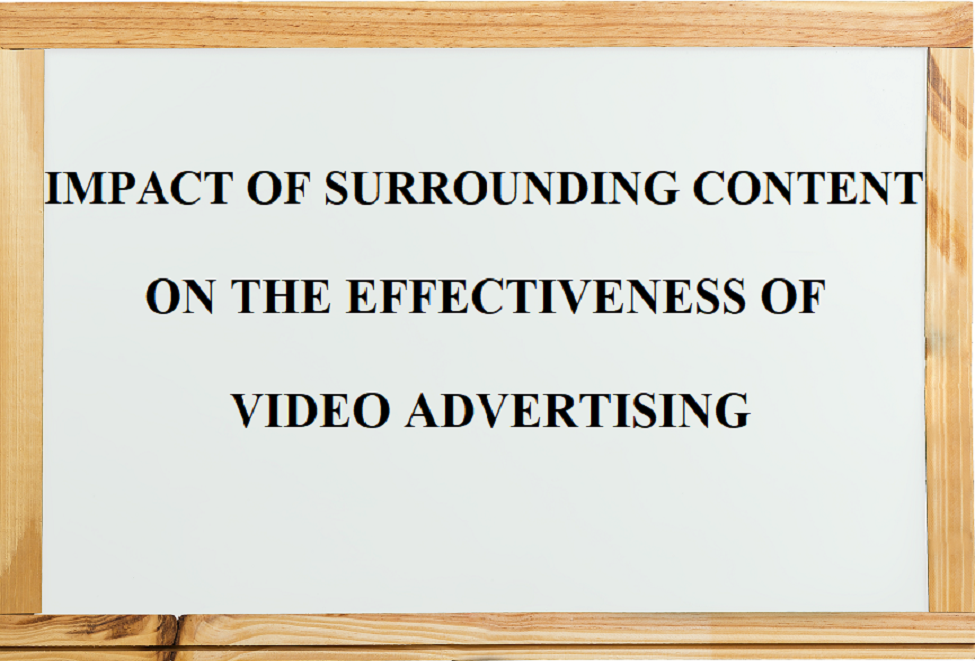
When targeting ads to consumers, marketers give importance to creative and demographics of audience. But these are not the only factors that marketers should take into account. A recent research study shows that consumers’ perception of video ads and effectiveness of video advertising are affected by the context in which the ads are viewed.
The study found that the quality and trustworthiness of the surrounding content are among the key factors influencing the effectiveness of video ads. It examined the impact of the context in which video ads are seen on the performance of ads and the viewers’ perception of ads. The surrounding content should not only be contextually relevant but should also ensure brand safety.
The study involved testing the performance of pre-roll video ads when surrounded by different types of content across different kinds of environments.The three different kinds of content against which the video ads were placed were as follows – content from premium publishers, content generated by users but from established creators, and content generated by users but from everyday people.
The study included more than forty-five hundred participants. A variety of combinations of content and ads were delivered to the mobile phones of the study participants across distinct environments, viz. – non-feed environment on a video aggregator, in-feed environment on a social media platform – Twitter, and non-feed environment on publisher sites.
Effectiveness of Video Advertising
The findings of the study are important for contextual advertising companies. The study revealed that the type of content adjacency significantly influences performance of a brand’s ad. When video ads were surrounded by high-quality and highly trustworthy content, an increase of twelve percent in participants’ purchase intent was observed because of high trustworthiness, while an increase of nine percent in buying intent was observed because of high quality. High-quality and highly trustworthy content scores high on brand safety.
Premium content fetched a greater positive opinion from study participants in comparison to user generated content. Therefore, brands whose video ads were placed against premium content were perceived by the participants as more interesting and favorable.
Video ads placed against user generated content created by established content creators were regarded by participants as more trustworthy and relevant in comparison to the video ads placed against user generated content created by average or non-established content creators.
To participants, non-feed pre-roll video ads appeared as more forced upon them in comparison to in-feed pre-roll video ads. Participants found in-feed pre-roll video ads to be more relevant in comparison to the non-feed video ads. In-feed video ads had more positive impact on participants’ buying intent and brand favorability in comparison to control.
The study clearly shows the importance of the quality of surrounding content in video advertising. By using AI-powered contextual advertising technology, marketers can precisely place ads against high-quality and contextually relevant content, thereby boosting brand favorability, brand trust and purchase intent, and creating deeper connections between consumers and brands.
Capitalizing on YouTube’s Unique Sports Content to Reach Massive Audience
PUBLISH DATE: 06 October 2021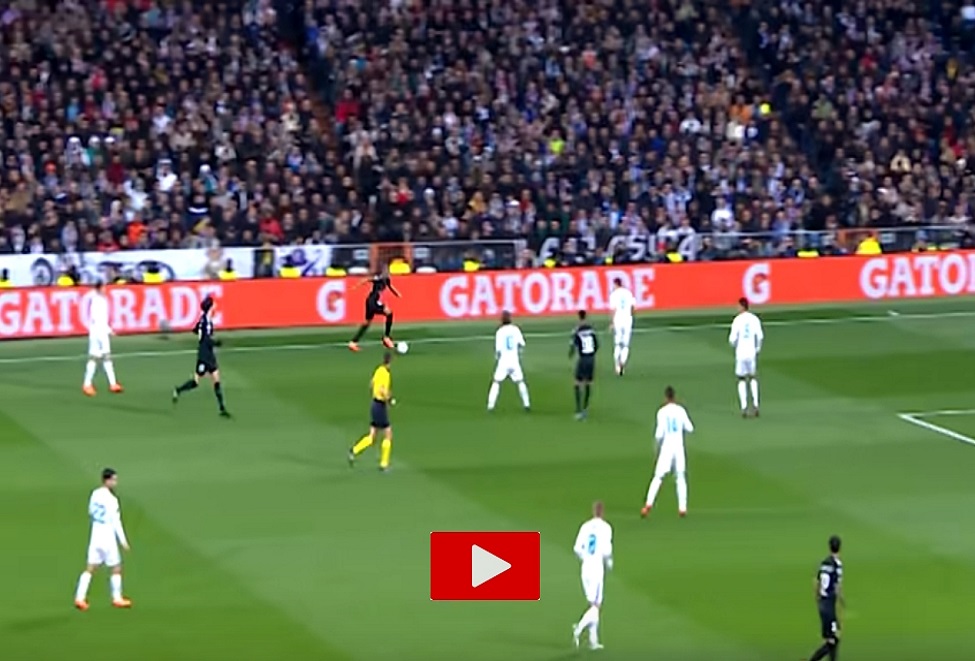
YouTube is extremely popular among video seekers from around the world. In fact, sports fans consider YouTube as their most preferred platform, even more than the cable television. Brands and their partner YouTube marketing companies can capitalize on the vast and unique sports content available on YouTube to reach massive audience.
Last year, during the pandemic, when live sporting events were not happening, more and more sports-starved fans turned to YouTube for watching sports related video content. According to the Global Audiences Study 2020 by Google, seventy-nine percent of viewers agree that sports content available on YouTube cannot be found elsewhere. More than ninety percent of millennials who watch content related to sports, use YouTube to do so.
Although live sporting events have returned, fans are still consuming YouTube sports content on their laptops, smartphones and TV screens. YouTube Internal Data report reveals that the watch time of YouTube sports content on television screens, excluding live content, has increased over sixty-five percent year over year.
Sports content available on YouTube is unmatched by other platforms. Apart from regular sports content, YouTube provides behind the scenes sports content and content uploaded by sportspersons. Many sportspersons are posting videos that provide their fans a deeper look into their on- and off-field lives, giving a new meaning to sports content. This helps sportspersons form a deeper connection with their fans. By running a YouTube ad campaign against such an authentic and immersive content, brands can better connect with viewers and drive great results.
On- and off-field content on YouTube is also being created by some digital sports media companies. They are creating long-form storytelling content around sports such as basketball, football, video games, etc., and athletes. Fans are highly keen to watch videos featuring their favorite athletes, and therefore, these videos fetch millions of views and subscribers. Brands can drive huge consumer engagement by running contextual YouTube video ads against such a content.
In order to reach maximum people, a chocolate manufacturing company decided to leverage YouTube advertising for its Super Bowl game campaign. In order to deliver message across all screens where game’s fans were watching, the brand used different YouTube ad formats, which included home feed ads and YouTube video ads on connected TV. The digital video advertising campaign provided excellent results. The brand achieved twenty-four percent incremental reach among its primary audience and a high return on ad spend.
YouTube’s vast and unique sports content offers an excellent opportunity to brands to connect with consumers and achieve their marketing goals.







